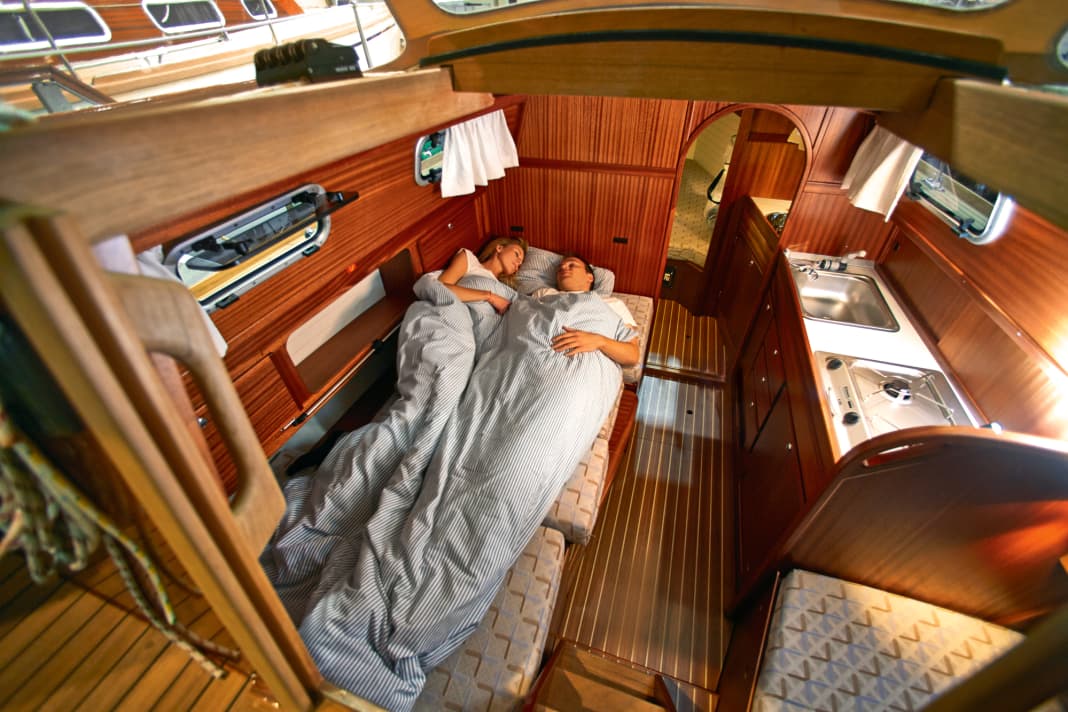





In this article:
The gentle rocking of the boat in the night breeze, the soft smacking of the small waves on the waterline and the soporific regular creaking of the mooring lines on the cleat - a night on board a yacht is an unrivalled experience.
But if you really want to rest undisturbed and relax, you need space, even on a sailing boat. Some need more, others less. But whether on a luxurious blue water yacht or a small cruiser with a slip cabin, the requirements of sailors in terms of a comfortable overnight stay on board are almost always the same.
The berth dimensions often vary considerably from boat to boat, even within comparable length or concept classes. Why is this the case?
How much space a boat can provide below deck depends primarily on its hull shape. It seems logical that wide and high-sided boats offer more volume inside than slim, flat or particularly sporty types. The wide sterns and full foredeck sections of the latest model generations now allow designers in the cruising segments in particular to work with completely new space ratios.
Several options for sleeping possible
This means that extended versions with three double cabins and still sufficiently large berth areas are now feasible with a hull length of less than eleven metres. And: island beds in the foredeck were already part of the range in the medium-sized segments, at least as an option. These are now standards that no cruising boat would have been able to fulfil in this form years ago, no matter how voluminous it was.
The dimensions of the berths are determined on the one hand by the available volume, and on the other hand by the limitations of many technical and constructional feasibilities as well as by the other interior fittings. An example of this: How large a forward berth can ultimately be is largely determined by the installation position of the main bulkhead. The further aft it is positioned, the more space and room for manoeuvre is available forward for the other fittings.
However, the bulkhead is not positioned arbitrarily in the ship, but according to the position of the rig, and this in turn according to the calculated sail pressure point of the sail area. And the bulkhead installed further aft again restricts the length of the saloon berths, if these in turn are not to shrink the toilet room and galley too much or restrict the aft berths beyond what is reasonable. A battle for centimetres.
In boat tests, YACHT evaluates the comfort in the berths not only in comparison to the standard of the class, but also with regard to specified minimum dimensions for average-sized adults in single or double berths. On the following pages, we present some examples of different types of berths.
Berths in the forecastle
The voluminous bow sections of modern designs allow king-size berths even for the middle length segments. And interesting alternatives to the conventional cabin layout in the foredeck are now also available
Triangular berth (example: Bavaria Cruiser 37)
The most common layout for the foredeck, especially on smaller and medium-sized yachts with a forepeak, but without additional sail storage space or skipper's cabin. The berth is usually built far into the bow, but this limits the foot space. There should still be 60 centimetres there so that the two of you are not too cramped. Because the hull shape opens upwards, the berth area is heavily dependent on the installation height - the higher it is, the wider it is. However, a headroom of more than 70 centimetres is still too much. The bunk must be at least 1.40 metres at shoulder width. Important: The longer the bunk, the more space there is for your feet at the end.
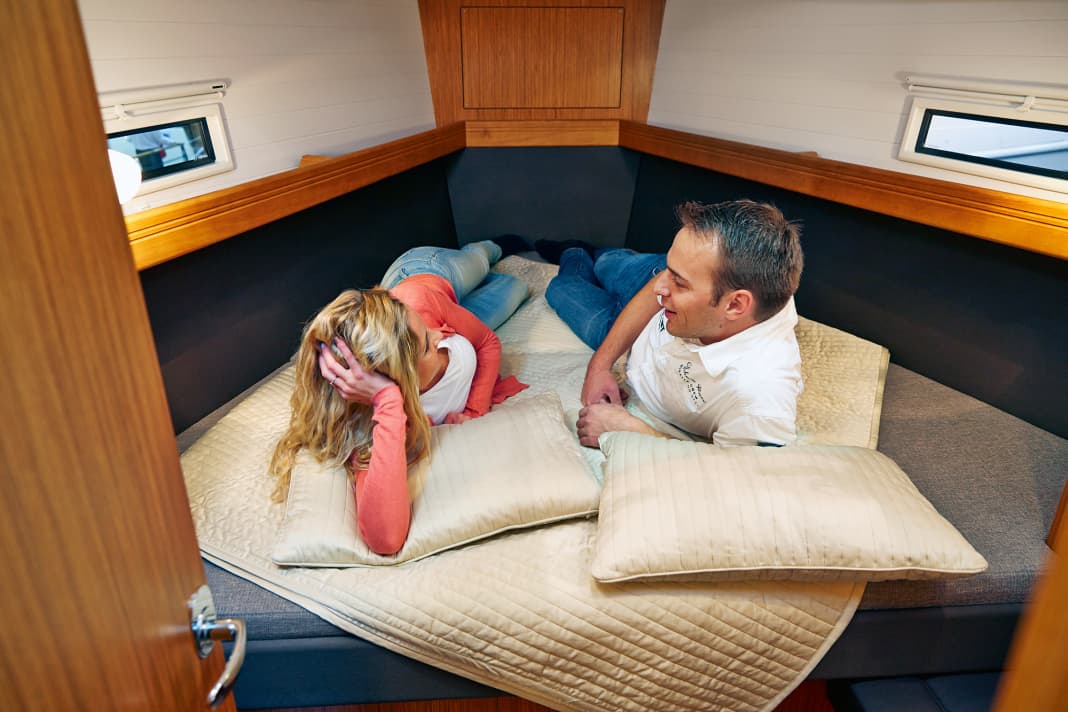


Island bed (example: Beneteau Oceanis 45)
The alternative, especially for larger yachts with plenty of space in the foredeck and an extended forepeak. The island bed has a modern and chic look, and getting into the berth is easier than with the conventional triangular berth because the head end points forwards. However, this is precisely why it is often cramped at shoulder height. Islands in the foredeck rarely measure more than the desirable minimum dimension of 1.40 metres at shoulder width. On the other hand, there is more space in the footwell. However, these berths are less seaworthy than triangular berths because they do not close off at the sides. Leech sails can prevent them from falling out. In any case, they are part of the package.
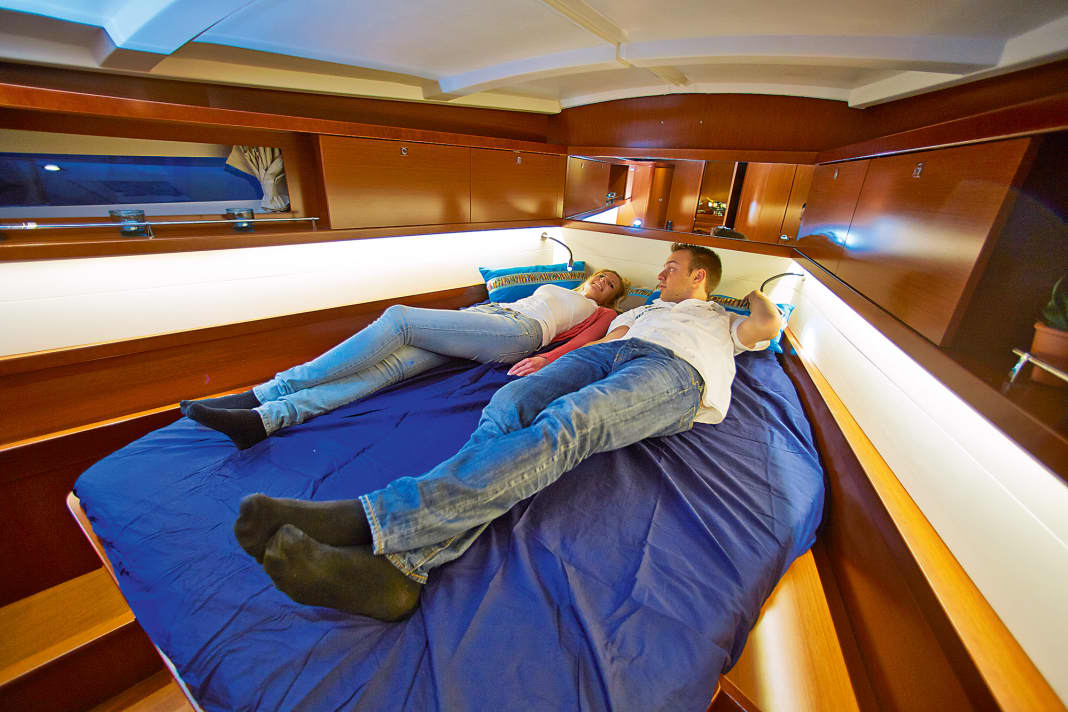


Lateral bunk (example: Dufour 410 GL)
A rather rare layout that is usually only offered as an option. Sleepers who are spoilt for space can get their money's worth, however, because both the shoulder width and the footwell are hardly subject to any space restrictions and the asymmetrical arrangement allows more room to manoeuvre. The side-mounted bunk area can even be extended with additional inlay cushions. Even with this arrangement, you generally sleep with your head forwards. However, it is difficult for the person resting against the outer wall if they need to get out at night. Awkward climbing over is then unavoidable.
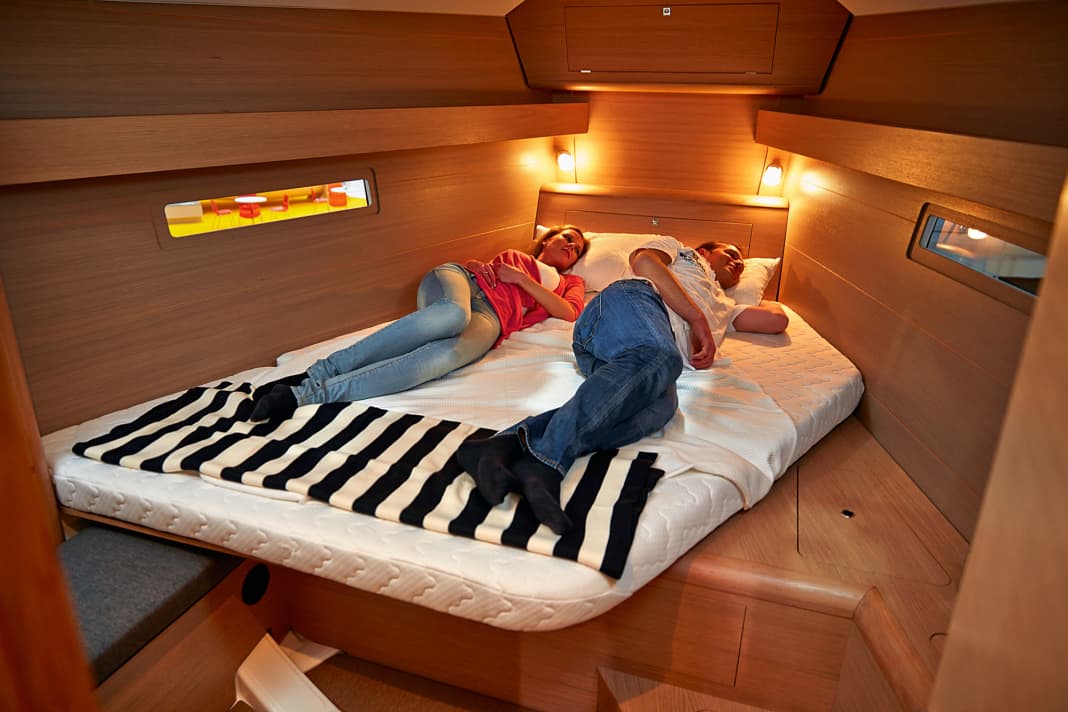


Berths aft
The different ship concepts offer a wide range of options for the aft interior, including customisation. For many medium-sized boats, a layout with either one or two cabins is feasible.
Owner's berth (example: Hallberg-Rassy 43)
Yachts with a centre cockpit allow for an undivided aft section with plenty of volume and more headroom than conventional boats. The spacious owner's cabins therefore usually feature a central island bed with rounded foot ends. The width of the berth is often limited by the side storage spaces, but a width of 1.40 metres at the shoulders is considered the absolute minimum. However, leeches are also required when travelling.
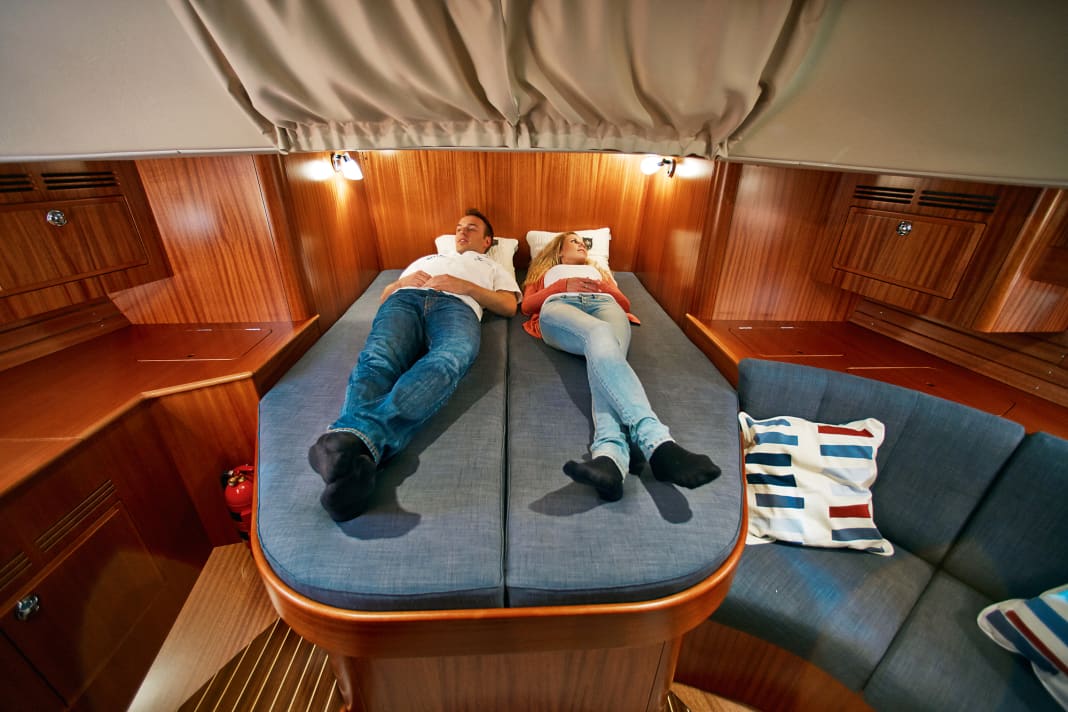


Double cab aft longitudinal (example: XC-42)
The wider a boat is at the stern, the more space there is in the aft cabins. The trendy chines can even increase the available space by a few centimetres. If two symmetrical cabins are installed lengthways at the rear, a central technical duct often restricts the width of the berths. The engine cover can also be a hindrance, as can a coker tube for the rudder shaft on smaller boats.
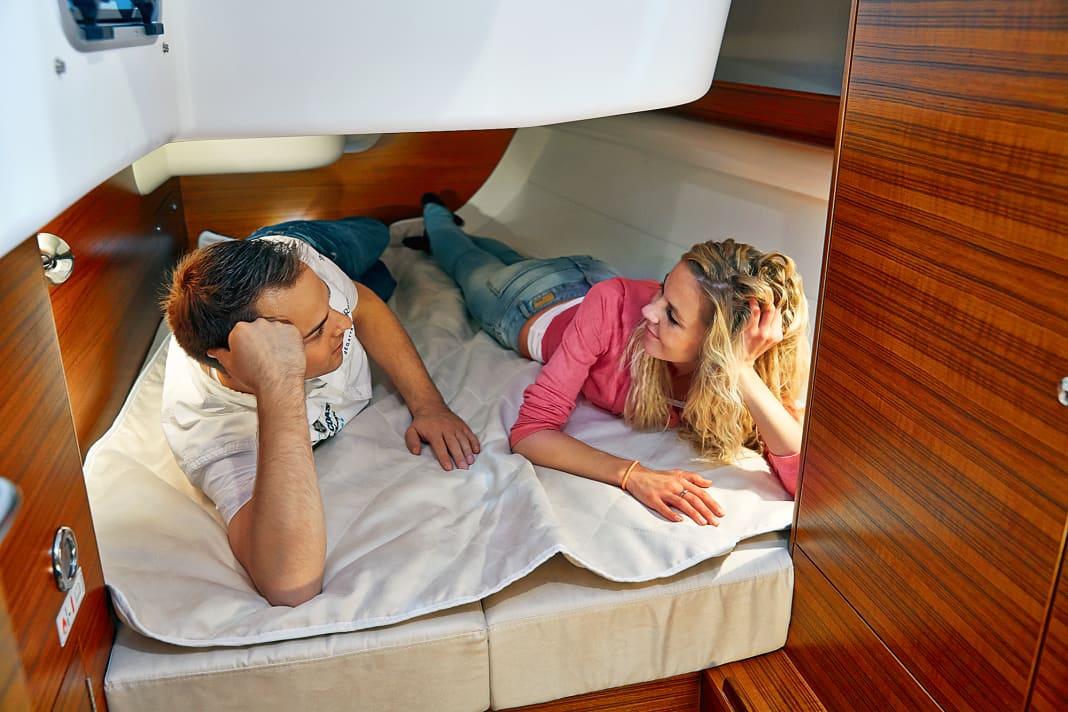


Double cabin aft transverse (example: Sun Odyssey 331)
An asymmetrical arrangement with an offset longitudinal bulkhead also allows a transverse berth aft. The width of the berth is usually very generous, but the length is often lacking. It should be two metres here too.
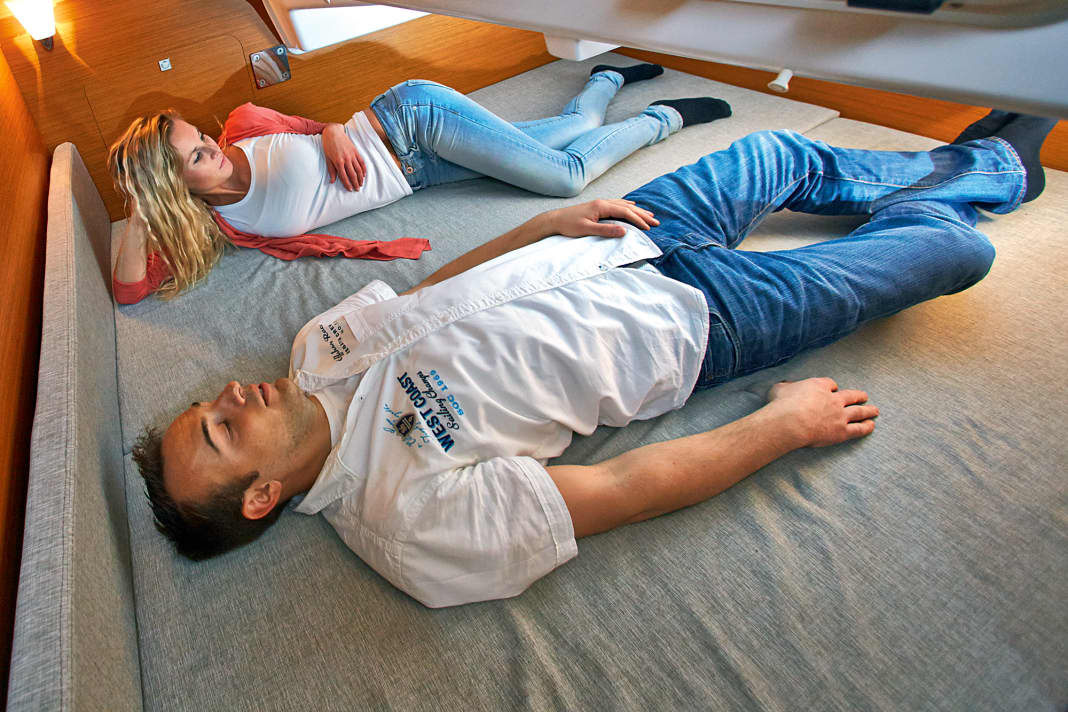


Dog bunk (example: Biga 242)
Not a basket for the dog on board, but a suitable bunk for the free watch or for the navigator at sea. Although the dog bunk has gone out of fashion, it is still used from time to time on newer and smaller boats. You sleep alone in it and getting in is rather awkward. However, it is seaworthy, even without a leeward sail. The width at shoulder height should be at least 75 centimetres.
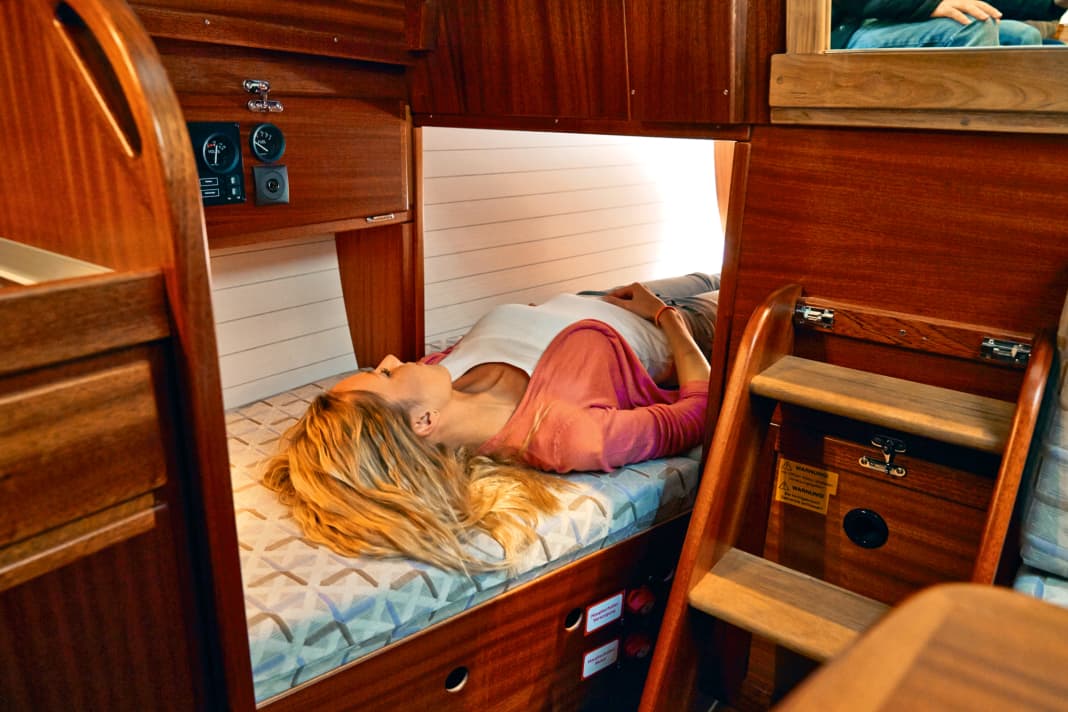


Berths in the saloon
Only those who cannot be accommodated in the cabins usually sleep in the saloon. However, the additional sleeping areas are still welcome, especially when chartering or travelling.
Sofa berth (example: Hallberg-Rassy 412)
The side sofa in the saloon can be used as an additional berth when fully occupied - provided it is long enough. Due to the access to the storage spaces underneath the sofas, the upholstery is usually divided into several sections, which can be annoying for the sleeper. Unfortunately, a folding backrest to widen the berth can only be found on a few yachts.
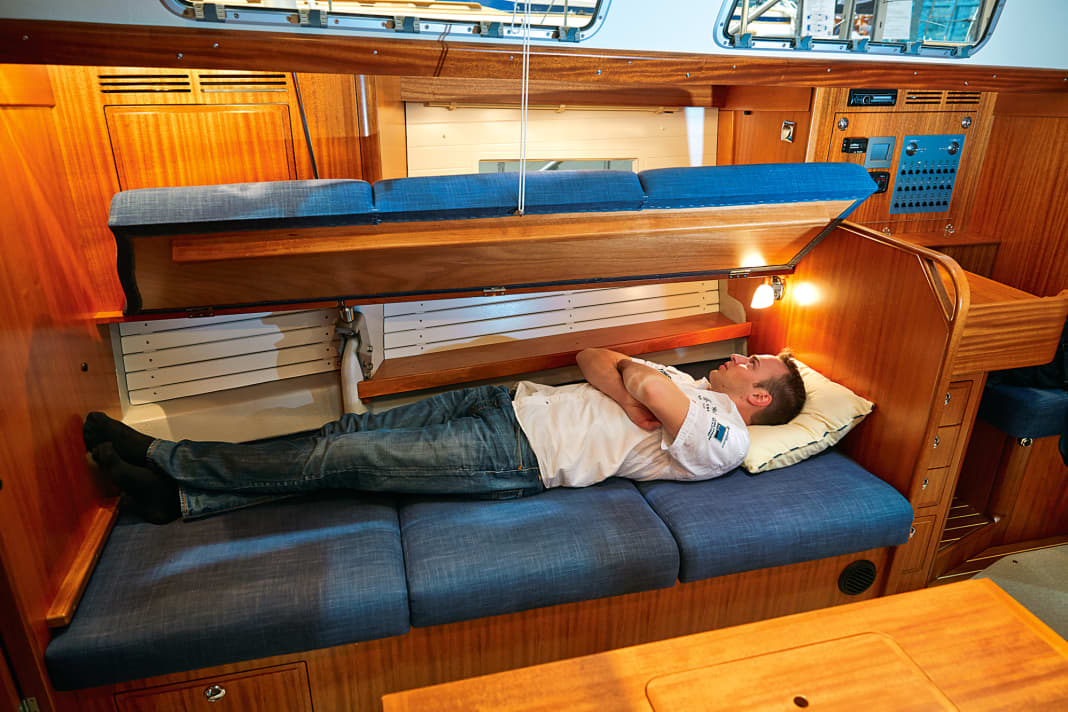


Sofa berth with widening (example: Dufour 36)
There are many solutions for a flexible bunk system instead of a U-shaped sofa or dinette. There are lowerable saloon tables or bunk extensions with inlay cushions. However, what is often advertised as an "optional double berth" does not fulfil the minimum dimensions in most cases. Here, too, two people can only sleep comfortably from a width of 1.40 metres.
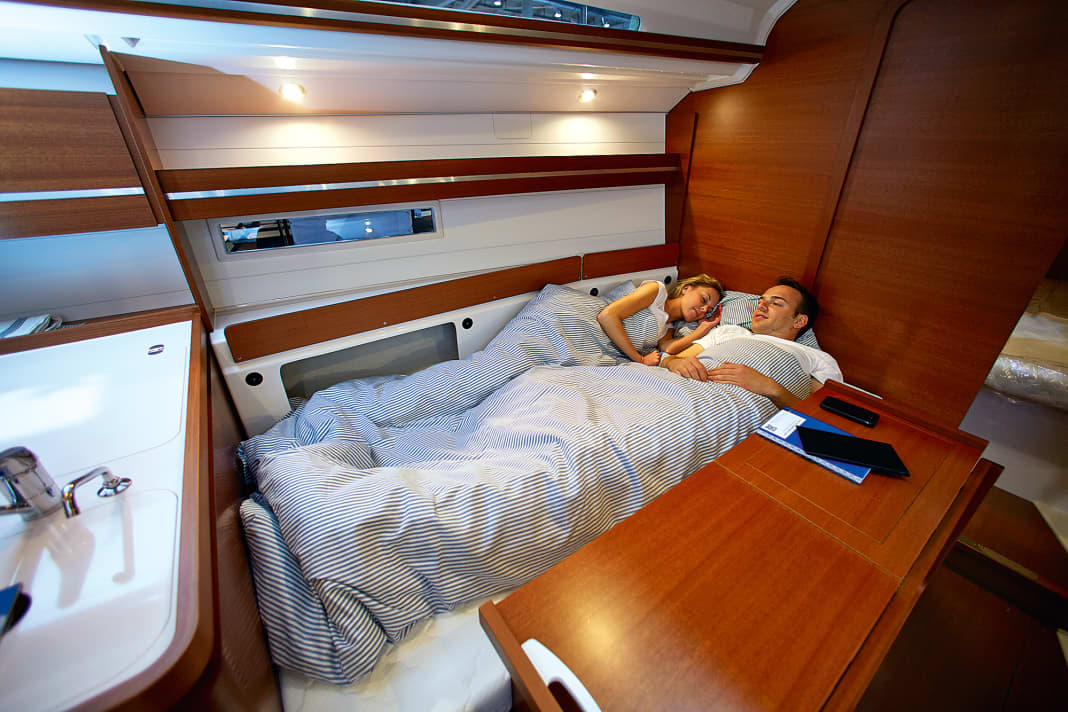


Sleeping or cuddling?
Some people like to be close to their partner at night, others need space. If you're looking for restful sleep, you have to be able to make arrangements.
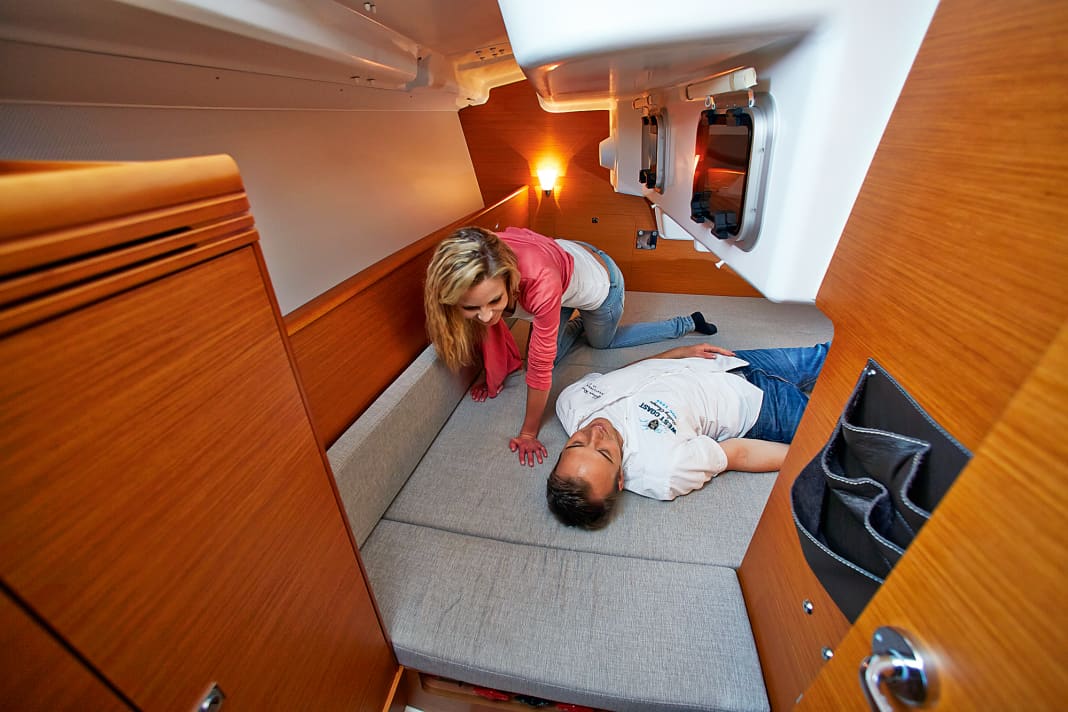



Note: The dimensions shown in the diagrams refer to the minimum comfort standards recommended by YACHT for the respective single or double berths. The berths listed as examples may have different dimensions. The "shoulder width" dimension is determined approx. 30 centimetres below the head end

